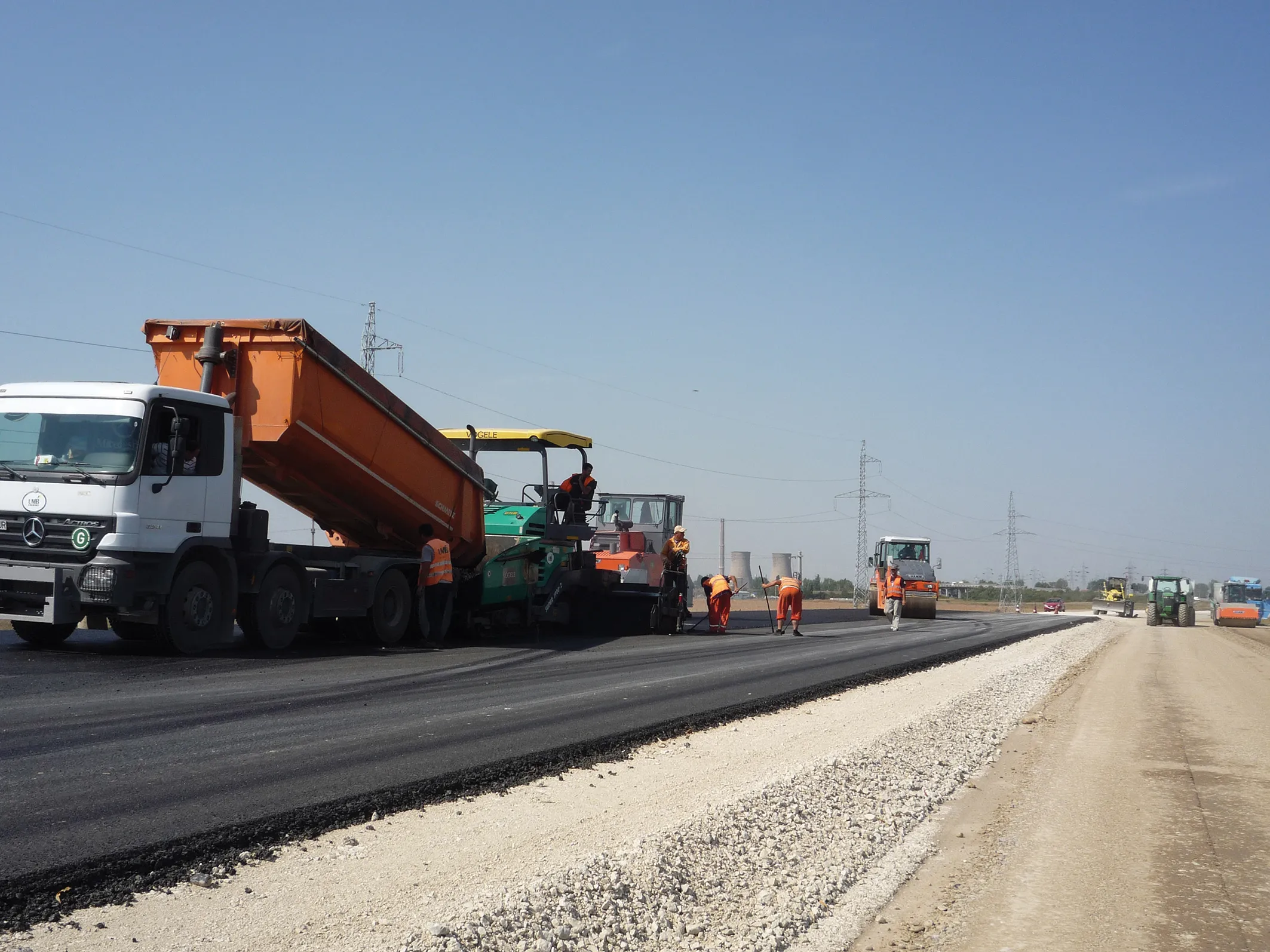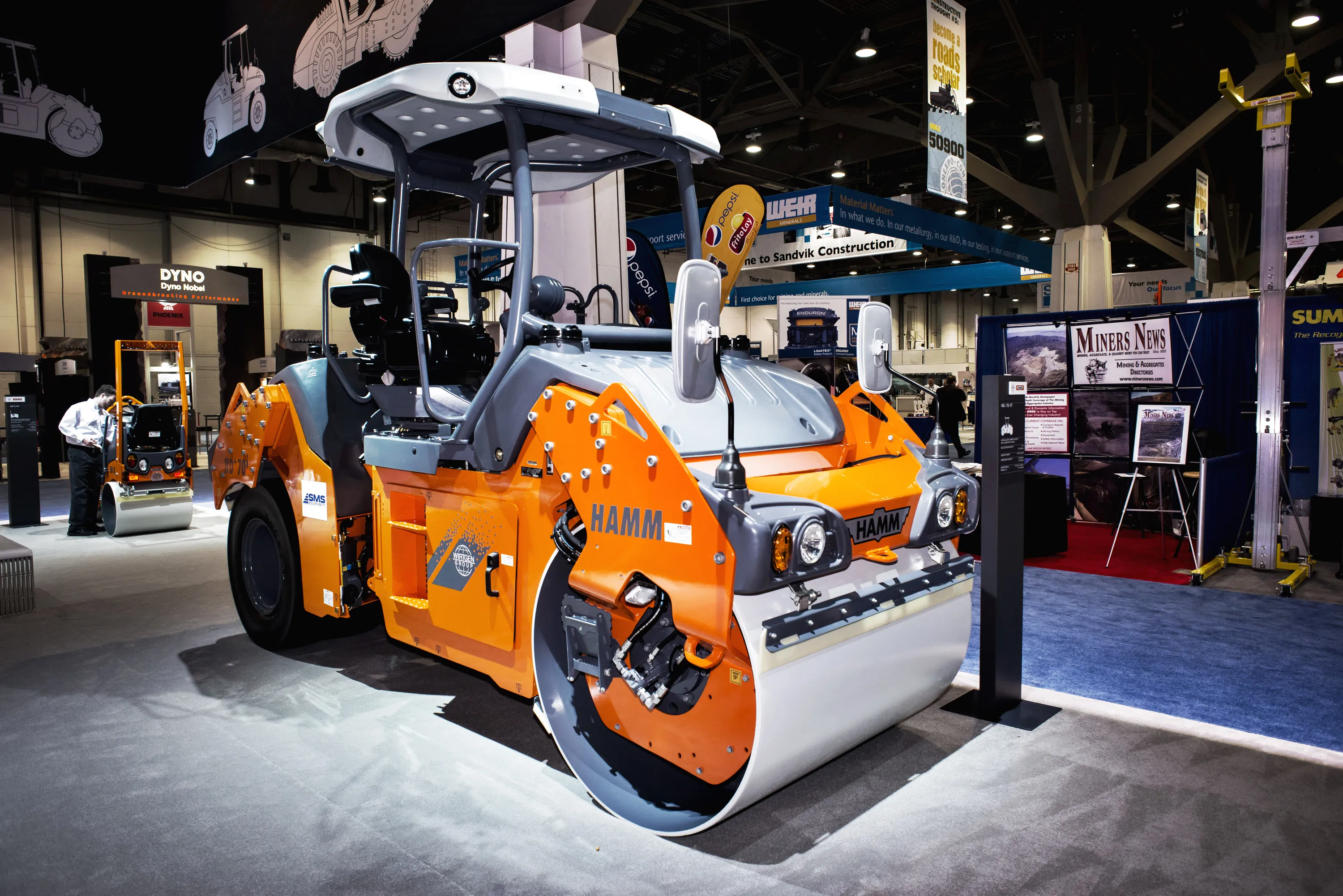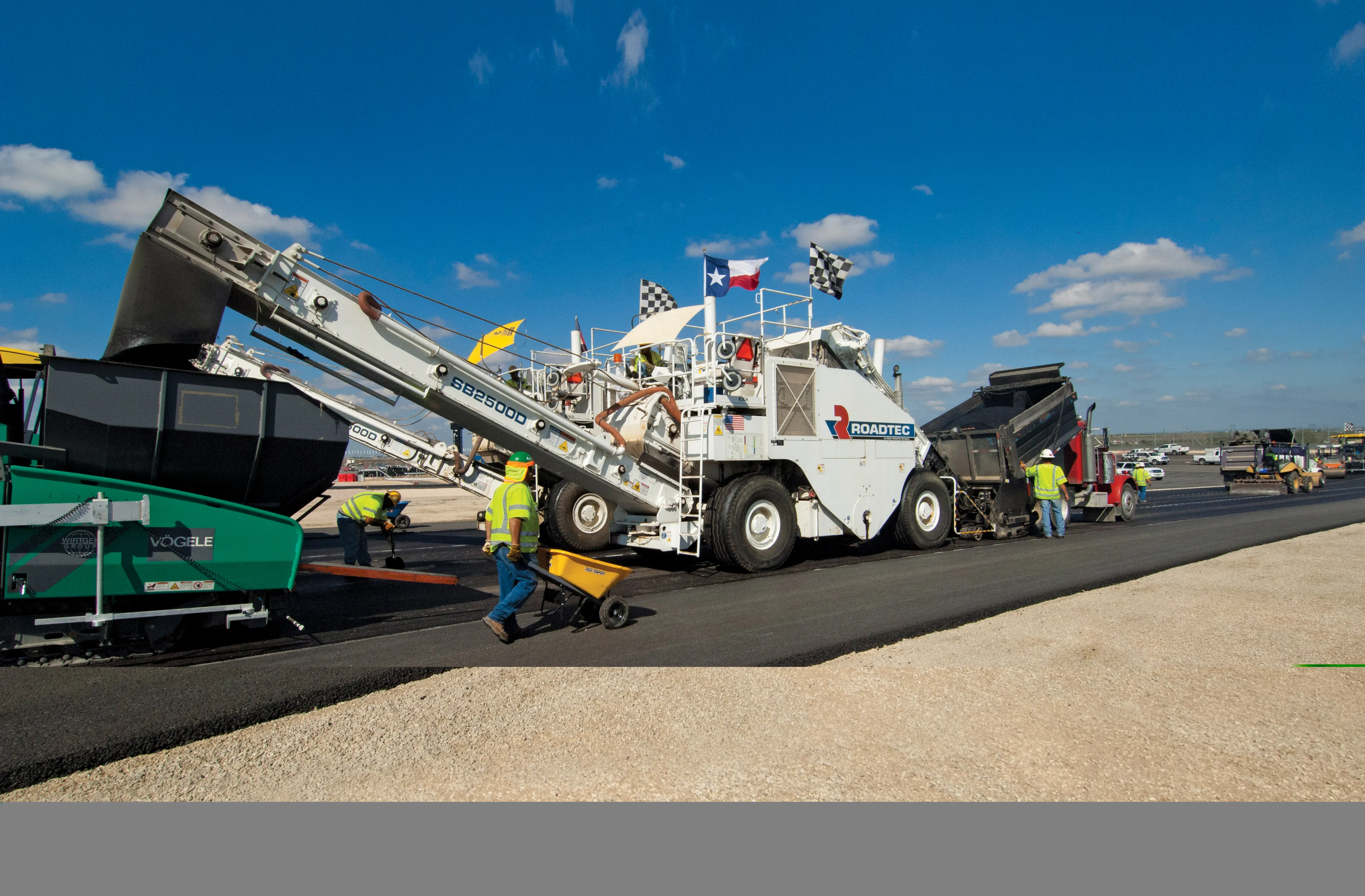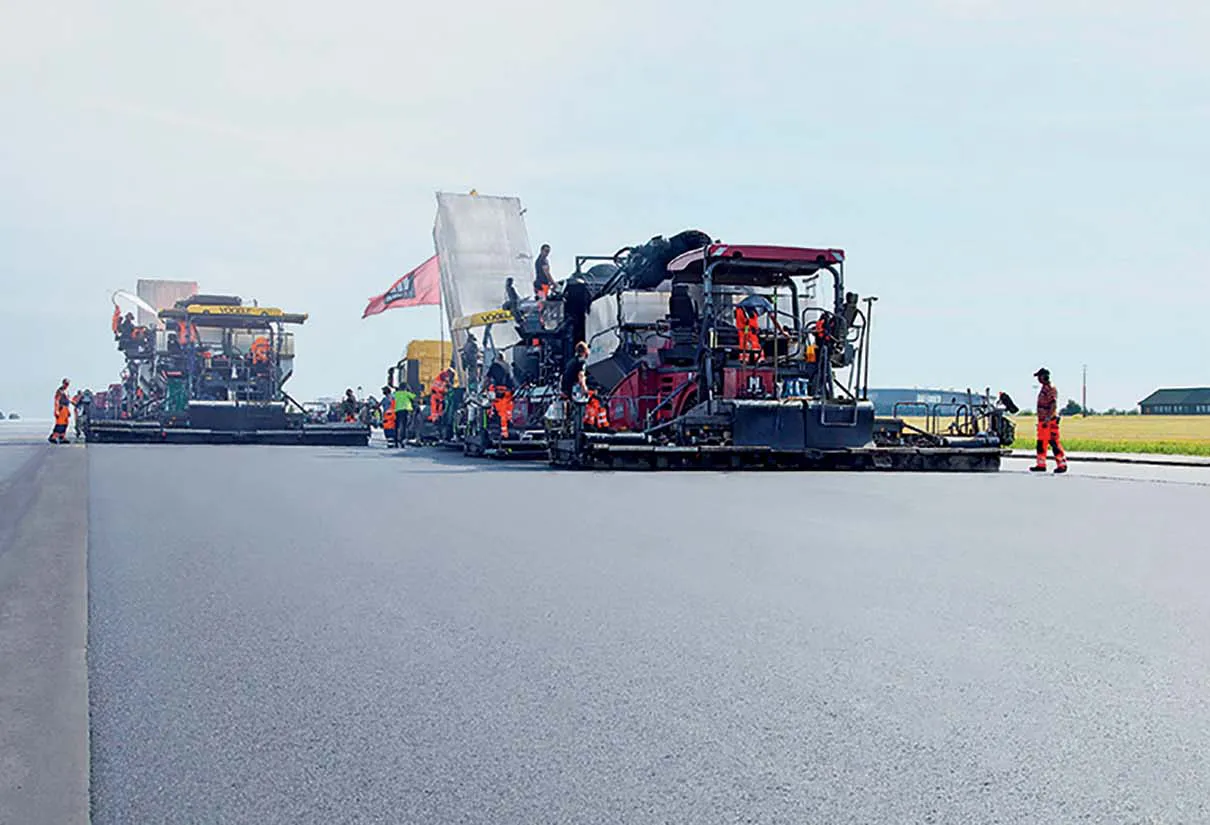A fleet of Wirtgen machines is helping build a section of a major highway in Romania, the Transylvanian Autostrada A3. This 588km road connects Romanian capital Bucharest with the Hungarian border and links to the Hungarian M4 highway. Plans for the A3 got the go-ahead in 2004 and the route runs via Ploieti, Braov, Sighioara, Târgu Mure, Cluj-Napoca, Zalau and Oradea to the Hungarian border, with completion scheduled for 2017.
December 17, 2013
Read time: 4 mins

A fleet of Wirtgen machines is helping build a section of a major highway in Romania, the Transylvanian Autostrada A3. This 588km road connects Romanian capital Bucharest with the Hungarian border and links to the Hungarian M4 highway. Plans for the A3 got the go-ahead in 2004 and the route runs via Ploieti, Braov, Sighioara, Târgu Mure, Cluj-Napoca, Zalau and Oradea to the Hungarian border, with completion scheduled for 2017.
364 Wirtgen Group machines have been used for the 62km Bucharest - Ploieti section, with the contracts being handled by two different consortia. These are Impressa Pizzarotti/Tirrena Scavi for the section from Bucharest to Moara Vlsiei, and Spedition UMB/Pa&Co International/Euroconstruct’98/Com-Axa for the Moara Vlsiei to Ploieti stretch.
Spedition UMB is part of the UMB Group owned by Dorinel Umbrarescu and opted for technological solutions from the Wirtgen Group for all construction phases, from the foundation and soil stabilisation, paving and compacting of asphalt, all the way to constructing the adjoining concrete elements, such as gutters and kerbs. In all, 35 Wirtgen machines were used for construction of the A3, as many as 20 of which were used on the final segment from the 48th to the 62nd kilometre. Six 20tonne228 Hamm 3520 soil compactors were used for the foundations and worked in two groups of three machines operating in echelon. The machines were equipped with HCQ compression meters to monitor compaction and provide the operators with continuous feedback on the work carried out.
All the compactors were also equipped with the Hammtronic system to optimise operation, boosting efficiency and also compaction results. The system monitors engine and machine functions such as travel drive, vibration, oscillation and engine speed, boosting productivity while reducing fuel consumption by 30-40%. Meanwhile VIO drums allowed some of the units to switch from vibration to oscillation as required, without stopping.
Soil stabilisation was carried out in-situ by an SW 16 TA binding agent spreader, Wirtgen WR 2500 S recycler and an 18tonne Hamm 3518 compactor. The SW 16 TA was used to spread the binding agent as specified according to samples, with the Wirtgen WR 2500 S processing the soil with binding agent to form a homogeneous load-bearing mixture, together with cement and water from a tanker. The processed soil was then pre-compacted in two or three passes and subsequently completed by a Hamm 3518 vibratory compactor with oscillation and the HCQ system.
UMB Spedition used two1194 Vögele pavers for the asphalt paving work: a Vögele Super 1900-2 with AB 600-2 TV screed with a pave width of 7.5m, and a Vögele Super 2100-2 equipped with the same screed, but extended to a maximum pave width of 9m. The first asphalt layer was levelled with the aid of Vögele Niveltronic Plus, used to control the grade across the entire section. A Big-MultiPlex Ski was used for the additional layers, although virtual scanning with three ultrasonic sensors meant that it was not necessary to set up stringlines.
Several Hamm GRW 15 rubber-wheeled rollers and 9.6tonne DV 90 VV oscillation rollers were employed for final compaction from a minimum value of 85% to a final value of 98%. In addition to their standard equipment, the GRW 15s were fitted with isothermal aprons and tyre heating to prevent material from sticking to the machines.
A key feature of the DV 90 VV oscillation roller with the Hammtronic management system is its electronic control system, which infinitely adjusts speed and oscillation frequency to the surface being compacted. The width of the surface compacted in one pass was increased from 1.68-2.9m by using two DV 90 VVs driving in echelon.
Finally, a Wirtgen SP 250 slipformer was used to make the adjoining concrete gutters and kerbs. For this application, UMB Spedition adjusted the configuration so that the SP 250 could lay down both the sand base course and the concrete in the specified profile, increasing productivity. And to install gutters in the central reservation and at bridge ramps, UMB Spedition used a wheeled Wirtgen W 100 F to mill 300 mm deep and 1m wide. Completion of the gutters was then handled by the SP 250, which laid down a sand base course and concrete surface course.
Spedition UMB is part of the UMB Group owned by Dorinel Umbrarescu and opted for technological solutions from the Wirtgen Group for all construction phases, from the foundation and soil stabilisation, paving and compacting of asphalt, all the way to constructing the adjoining concrete elements, such as gutters and kerbs. In all, 35 Wirtgen machines were used for construction of the A3, as many as 20 of which were used on the final segment from the 48th to the 62nd kilometre. Six 20tonne
All the compactors were also equipped with the Hammtronic system to optimise operation, boosting efficiency and also compaction results. The system monitors engine and machine functions such as travel drive, vibration, oscillation and engine speed, boosting productivity while reducing fuel consumption by 30-40%. Meanwhile VIO drums allowed some of the units to switch from vibration to oscillation as required, without stopping.
Soil stabilisation was carried out in-situ by an SW 16 TA binding agent spreader, Wirtgen WR 2500 S recycler and an 18tonne Hamm 3518 compactor. The SW 16 TA was used to spread the binding agent as specified according to samples, with the Wirtgen WR 2500 S processing the soil with binding agent to form a homogeneous load-bearing mixture, together with cement and water from a tanker. The processed soil was then pre-compacted in two or three passes and subsequently completed by a Hamm 3518 vibratory compactor with oscillation and the HCQ system.
UMB Spedition used two
Several Hamm GRW 15 rubber-wheeled rollers and 9.6tonne DV 90 VV oscillation rollers were employed for final compaction from a minimum value of 85% to a final value of 98%. In addition to their standard equipment, the GRW 15s were fitted with isothermal aprons and tyre heating to prevent material from sticking to the machines.
A key feature of the DV 90 VV oscillation roller with the Hammtronic management system is its electronic control system, which infinitely adjusts speed and oscillation frequency to the surface being compacted. The width of the surface compacted in one pass was increased from 1.68-2.9m by using two DV 90 VVs driving in echelon.
Finally, a Wirtgen SP 250 slipformer was used to make the adjoining concrete gutters and kerbs. For this application, UMB Spedition adjusted the configuration so that the SP 250 could lay down both the sand base course and the concrete in the specified profile, increasing productivity. And to install gutters in the central reservation and at bridge ramps, UMB Spedition used a wheeled Wirtgen W 100 F to mill 300 mm deep and 1m wide. Completion of the gutters was then handled by the SP 250, which laid down a sand base course and concrete surface course.








